|
|
|
 |
|
|

 |
|
|
|
World’s First Pentagon-Shaped Aerator KUH KAI |
|

 |
|
|
| KUH KAI is an innovative product that collides, stirs and breaks down sludge and air into fine particles in a pentagonal cylinder 65cm in length, to accelerate purification of waste water. |
|
| Air jetted from a pentagonal cylinder diffuses and radiates outward while
eddying in a non-conventional approach. |
|
| Features |
|
|
|
|
|
Freely applicable when the water is 1m or deeper |
|
|
|
Freely applicable to existing or new equipment as long as the water tank
is 1m or deeper. |
|
|
|
|
No clogging (Pentagonal tube opening 80×130mm) |
|
|
|
No need to worry about clogging because of the large-diameter opening,
and intermittent running and denitrification can be freely performed. |
|
|
|
|
Power cost reduction(20~40%) Blower cost accounts for 70% to 80% of the electricity cost of drainage
treatment tank equipment |
|
|
|
With small pressure loss between air in-take(40A) and discharge(25A), the power cost can be substantially reduced. |
|
|
|
|
No sludge flocculation on the tank bottom and the oxygen transfer rate
is high(Air-lift effects) |
|
|
|
Sludge on the tank bottom is drawn into the pentagonal cylinder Sludge
and air are broken down into fine particles and increase the oxygen transfer
rate, while colliding, being stirred, and rotating. This how KUH KAI purifies
the water. |
|
|
|
|
Easy maintenance and management due to its simple structure |
|
|
|
The main body is made of stainless steel and the inside is made of molded resin. Maintenance free.
※The main body material and the installation method can be changed according to need. |
|
|
| Mixing demonstration in a clear water tank |
|
|
|
| Quasi sludge:Beads/Tetron yarn |
|
 |
|
| Whole tank volume: 170L |
|
Sludge drawn into a cylinder rises and rotates while colliding against
and being mixed with air. |
|
Sludge stirred in the cylinder churns in a spiral and circulates in the
tank for purification. |
|
|
| Data |
|
|
|
| Model |
Material |
Connection |
Weight |
Air supply volume【㎥/min】 |
Covered
area
【㎥】 |
Adaptable
water depth
【m】 |
| Main body |
Piping |
Lower limit |
Recommended |
Upper limit |
| KA-L |
Stainless
steel
(POM) |
SUS |
40A |
7.2 |
0.4 |
1.1 |
1.5 |
6〜12 |
1〜 |
| KA-M |
Stainless
steel
(POM) |
SUS |
20A |
4.8 |
0.1 |
0.3 |
0.5 |
4~5 |
1〜 |
|
|
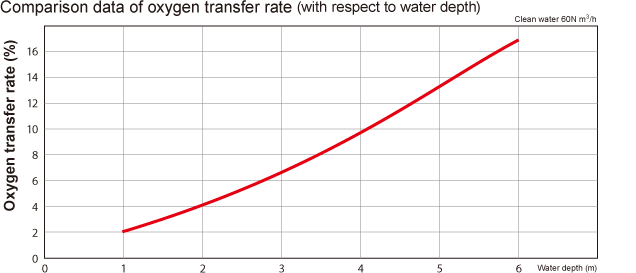 |
|
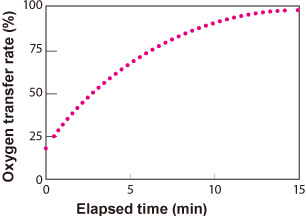 |
|
Experimentconditions:May 12, 2008
Water temperature: 18.3°C
Water tank: 1m × 1m × 1m
Blower: 300W 250L/min
Dissolved oxygen meter: YSI Model 95
Nitrogen gas was supplied to lower the oxygen saturation rate, then the
air was supplied tothe KUH KAI to measure the recovery time of oxygen dissolution. |
|
|
| Experimental data regarding oxygen dissolution into tap water by use of the KUH KAI |
| (Associate Professor Yoshihiro Yamada, Department of Applied Biological
Science, Faculty of Agriculture, Kagawa University) |
|
| L-Model dimensional drawing |
|
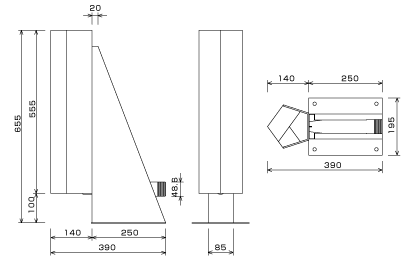
 |
|
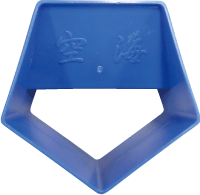
Resin mold
(photographed from above) |
|
|
| For M-Model dimensions, contact us. |
|
|
| Wonders of Equilateral Pentagon |
|
|
|
|
|
Wonders of Equilateral Pentagon |
|
|
Echinoderm such as starfish, petals of cherry blossoms and hibiscus, etc.,
have naturally evolved into a pentaradial symmetrical pattern as a response to earth’s gravitation.
Golden ratio --- between lengths of each side and the diagonal line, and between lengths of line segments divided by the point of intersection between diagonal lines is 1:1.618. |
|
 |
|
|
|
|
Discovery of Fullerene C60: 1996 Nobel Prize in Chemistry |
|
|
[Sir Harold Walter Kroto, et al. of the University of Sussex in England, according to an Asahi Shimbun article dated October 11, 1996]
This structure has carbon atoms at the apexes of polyhedrons of a pentagon and a hexagon like the surface of a soccer ball.
The discovery of C60 triggered an explosion in the amount of research and
in a wide variety of applications such as electronic materials.
※The discovery inspired by a circular structure of Equilateral pentagons
and hexagons at the Canadian National Exhibition Dome was awarded the Nobel
Prize in Chemistry. |
|
 |
|
|
|
|
Discovery of Equilateral pentagonal quasicrystals: 2011 Nobel Prize in
Chemistry |
|
|
[Dr. Daniel Shechtman, Technion - Israel Institute of Technology, according to articles in The Asahi Shimbun and The Shikoku Shimbun dated October 6, 2011]
Equilateral pentagonal quasicrystals: Structure of a complex combination
of Equilateral pentagons consisting of alloy atoms.
Quasicrystals are expected to be used in industrial product such insulation parts of as engine because they are extremely hard and heat is not easily transferred.
Quasicrystals have a mysterious atomic arrangement, and this arrangement has created controversy as quasicrystals being unorthodox that deviate from the conventional definition.
Although the initial quasicrystals were unstable, the discovery and applications of stable quasicrystals by Professor Aoi, et al., of Tohoku University led to a Nobel prize. |
|
|
|
Aerator KUH KAI: World’s First Pentagon-Shaped Diffuser |
|
|
| Air and sludge drawn into the pentagonal cylinder turn and rise in a spiral, and air bubbles are broken down into fine particles and circulating in a tank to accelerate purification of waste water. |
|
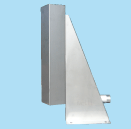 |
|
|
|
|
|
|
|
|
|
|